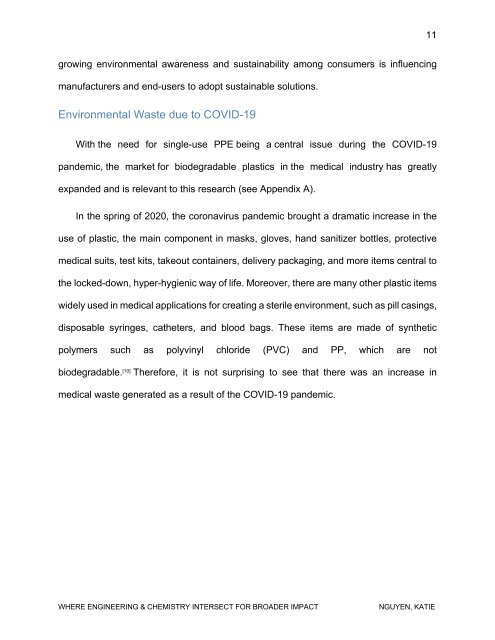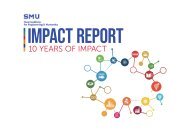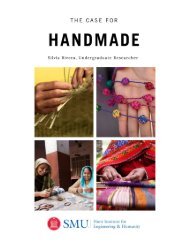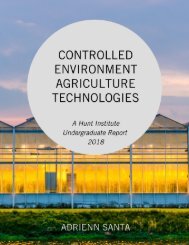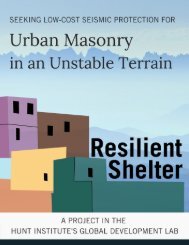Where Engineering & Chemistry Intersect for Broader Impact
Currently, many biodegradable products in the market are bio-based, such as polysaccharides, proteins, and lipids, and are focused on conventional plastic applications. This approach to production of biodegradable plastics, however, is facing mounting challenges due to high cost, weaker performance, and environmental issues. In addition, several biodegradable plastics have proven to break down quickly under specific, simulated environmental conditions, but they may not be effectively degradable under natural conditions. As a result of these challenges and many more, there exists a gap in the market. Our Project Affiliates, Dr. Son and Dr. Krueger, aim to bridge this gap by pursuing a biodegradable plastic that better addresses the aforementioned challenges, investigating a prototype plastic with predictable degradation and mechanical properties. In the spirit of interdisciplinary innovation, they seek to develop a joint chemical and engineering approach to biodegradable plastics for broader impact.
Currently, many biodegradable products in the market are bio-based, such as polysaccharides, proteins, and lipids, and are focused on conventional plastic applications. This approach to production of biodegradable plastics, however, is facing mounting challenges due to high cost, weaker performance, and environmental issues. In addition, several biodegradable plastics have proven to break down quickly under specific, simulated environmental conditions, but they may not be effectively degradable under natural conditions. As a result of these challenges and many more, there exists a gap in the market.
Our Project Affiliates, Dr. Son and Dr. Krueger, aim to bridge this gap by pursuing a biodegradable plastic that better addresses the aforementioned challenges, investigating a prototype plastic with predictable degradation and mechanical properties. In the spirit of interdisciplinary innovation, they seek to develop a joint chemical and engineering approach to biodegradable plastics for broader impact.
You also want an ePaper? Increase the reach of your titles
YUMPU automatically turns print PDFs into web optimized ePapers that Google loves.
11<br />
growing environmental awareness and sustainability among consumers is influencing<br />
manufacturers and end-users to adopt sustainable solutions.<br />
Environmental Waste due to COVID-19<br />
With the need <strong>for</strong> single-use PPE being a central issue during the COVID-19<br />
pandemic, the market <strong>for</strong> biodegradable plastics in the medical industry has greatly<br />
expanded and is relevant to this research (see Appendix A).<br />
In the spring of 2020, the coronavirus pandemic brought a dramatic increase in the<br />
use of plastic, the main component in masks, gloves, hand sanitizer bottles, protective<br />
medical suits, test kits, takeout containers, delivery packaging, and more items central to<br />
the locked-down, hyper-hygienic way of life. Moreover, there are many other plastic items<br />
widely used in medical applications <strong>for</strong> creating a sterile environment, such as pill casings,<br />
disposable syringes, catheters, and blood bags. These items are made of synthetic<br />
polymers such as polyvinyl chloride (PVC) and PP, which are not<br />
biodegradable. [10] There<strong>for</strong>e, it is not surprising to see that there was an increase in<br />
medical waste generated as a result of the COVID-19 pandemic.<br />
WHERE ENGINEERING & CHEMISTRY INTERSECT FOR BROADER IMPACT<br />
NGUYEN, KATIE


